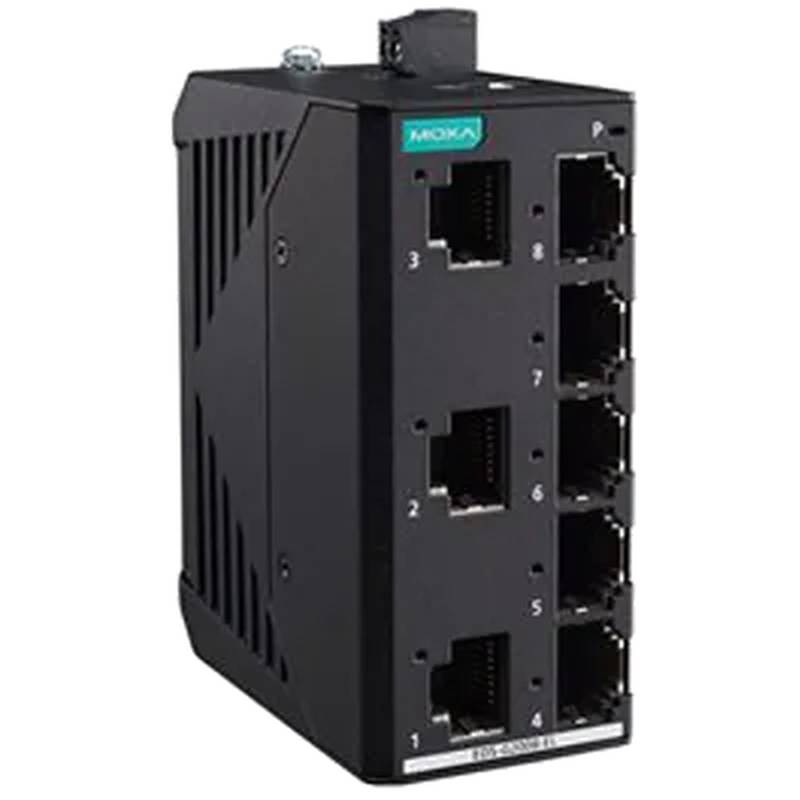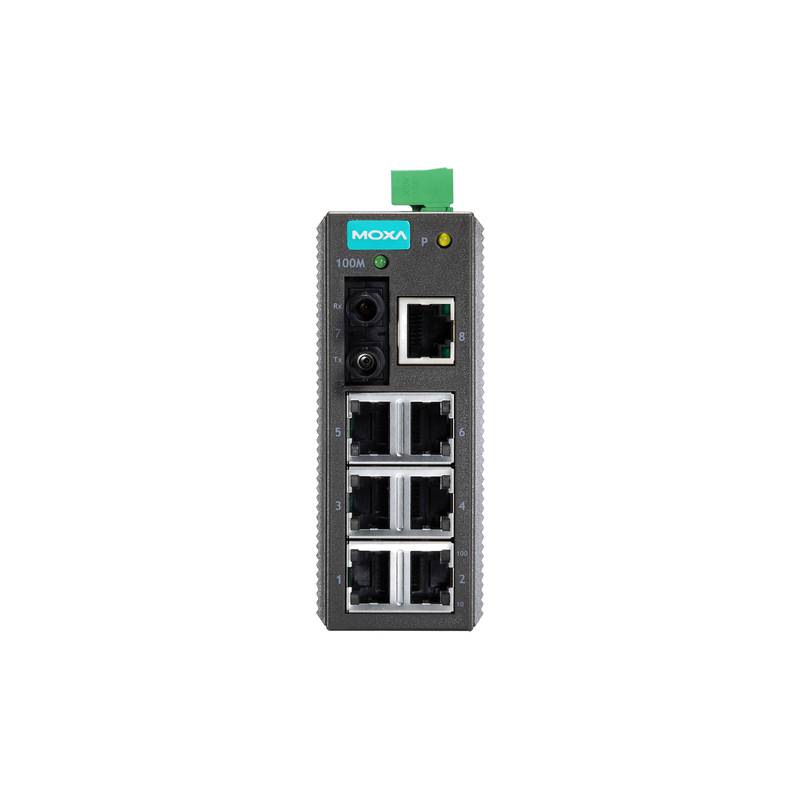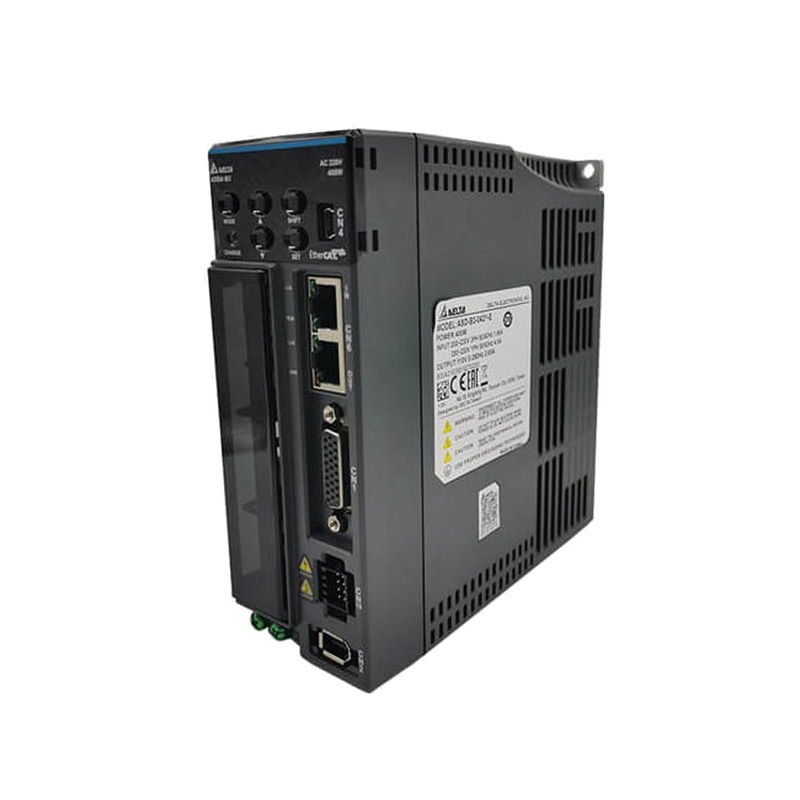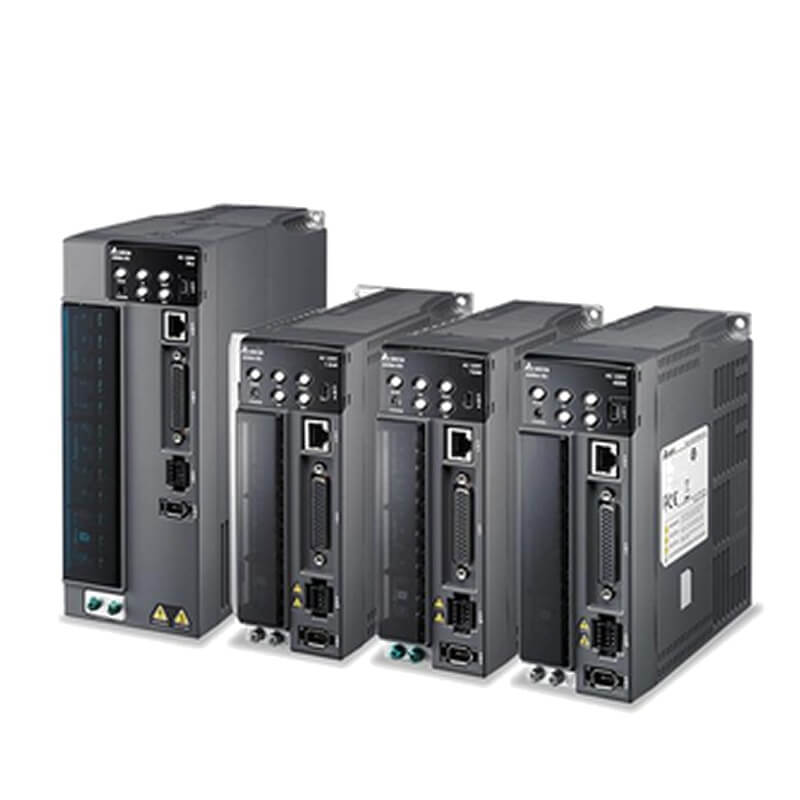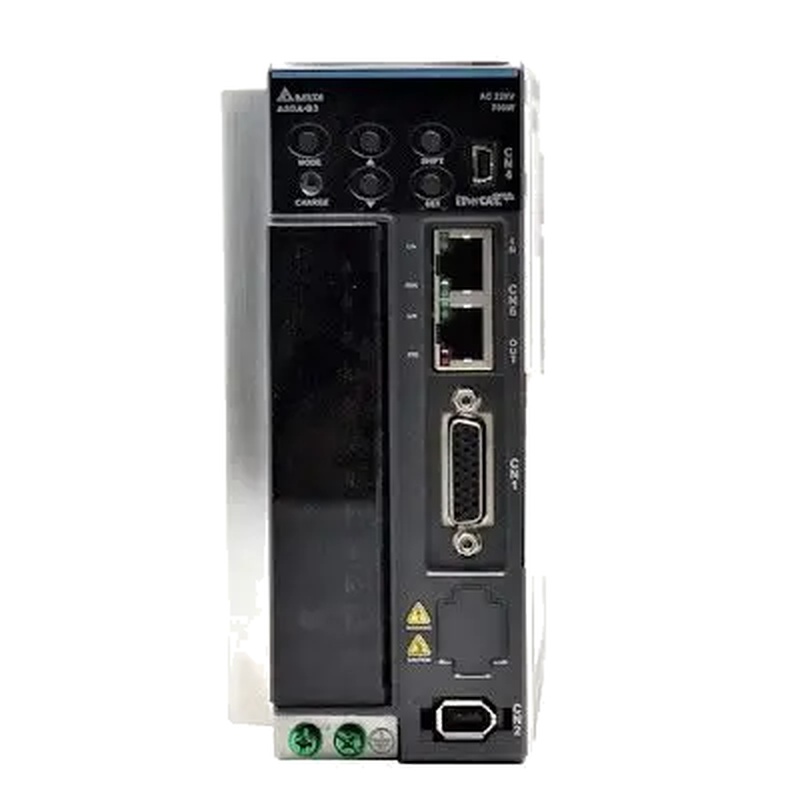
The Siemens 5SU1656-1KK10 is a compact and reliable 10A, 300mA, 1P+N Residual Current Circuit Breaker (RCCB) designed for robust earth leakage protection in various electrical installations. This high-performance device offers essential safety by rapidly disconnecting power in the event of an earth fault, preventing potential electric shocks and fire hazards. Its Type C tripping characteristic ensures it can handle moderate inrush currents without nuisance tripping, making it ideal for protecting circuits with inductive loads such as motors and fluorescent lighting. The 1P+N configuration provides a space-saving solution, integrating both the active conductor and neutral in a single pole width, simplifying panel assembly and saving valuable space. This Siemens RCCB is engineered for demanding industrial and commercial applications where safety and operational continuity are paramount.
Product Specifications
| Feature | Specification |
| :-------------------- | :--------------------------------------------- |
| Manufacturer | Siemens |
| Product Series | 5SU1 |
| Model Number | 5SU1656-1KK10 |
| Type | RCCB (Residual Current Circuit Breaker) |
| Rated Current (In) | 10 A |
| Rated Residual Current| 300 mA |
| Number of Poles | 1P+N (1 Pole + Neutral) |
| Tripping Characteristic| C Curve |
| Rated Voltage (Un) | 230/400 V |
| Frequency | 50/60 Hz |
| Breaking Capacity | 6 kA (IEC 60898-1) |
| Terminal Type | Screw Terminals |
| Mounting Type | DIN Rail (35mm) |
| IP Protection Rating | IP20 (device), IP40 (enclosure, if applicable) |
| Operating Temperature | -25°C to +45°C |
| Insulation Voltage | 500 V |
Core Features & Market Positioning
The Siemens 5SU1656-1KK10 stands out in the competitive landscape of residual current protection devices due to its robust construction and reliable performance, characteristic of the Siemens industrial automation portfolio. Its Type C tripping characteristic is a significant differentiator, offering enhanced immunity to transient overcurrents commonly encountered in motor control circuits and lighting systems with magnetic ballasts. This feature minimizes nuisance tripping, thereby improving operational uptime, a critical factor in industrial settings. The 1P+N design is another key advantage, providing a more compact solution for single-phase circuits compared to separate neutral conductors and single-pole breakers, leading to cost savings in terms of panel space and wiring. Its integration into the broader Siemens industrial ecosystem ensures compatibility with other Siemens components, facilitating seamless system design and expansion.
Key Application Scenarios
This Siemens RCCB is exceptionally well-suited for protecting circuits in commercial buildings, industrial facilities, and specific residential applications where enhanced safety against earth leakage is required. Its primary role is in safeguarding personnel and equipment from the dangers of electric shock, particularly in areas with higher moisture content or where conductive surfaces are prevalent. Common applications include the protection of lighting circuits, power outlets for machinery, HVAC systems, and sensitive electronic equipment. The 300mA residual current sensitivity is ideal for main distribution boards and sub-distribution boards where a higher level of protection is mandated by electrical codes and standards, acting as a primary safety device. The Type C characteristic makes it particularly valuable for circuits supplying inductive loads such as small motors, pumps, and fans, where brief inrush currents are normal during startup.
Practical System Integration Guidance
Integrating the Siemens 5SU1656-1KK10 into an electrical system is straightforward, leveraging standard DIN rail mounting. Ensure the main power supply is de-energized before commencing installation. The line side (input) terminals should be connected to the power source, typically from the upstream circuit breaker or busbar. The load side (output) terminals connect to the protected circuit conductors. Crucially, the neutral terminal must be connected to the neutral conductor of the circuit being protected. For 1P+N configurations, it's imperative to connect the line conductor to the designated phase terminal and the neutral conductor to the designated neutral terminal to ensure correct operation. Proper conductor sizing and termination torque, as per manufacturer guidelines and relevant electrical codes, are essential for safe and reliable operation. Always verify wiring against the circuit diagram and perform a functional test after installation.
Operation and Risk Mitigation
The fundamental operation of the Siemens 5SU1656-1KK10 relies on continuously monitoring the balance of current flowing through the phase and neutral conductors. In a healthy circuit, these currents are equal. If an earth fault occurs, such as a live wire touching a grounded metal casing, an imbalance is created. The RCCB detects this imbalance, and if it exceeds the rated residual current of 300mA, it rapidly trips, disconnecting both the phase and neutral conductors from the supply. This swift action minimizes the duration of fault current, significantly reducing the risk of electrocution and fire. To mitigate risks, regular testing of the RCCB's functionality using its integrated test button is recommended, typically on a monthly basis. Ensure the test button is pressed when the circuit is energized and verify that the breaker trips. If it fails to trip, the device may be faulty and requires immediate replacement. Avoid overloading circuits and ensure proper grounding of all equipment connected to the protected circuit.
Scalability & Long-Term Value
The Siemens 5SU1656-1KK10 RCCB offers excellent long-term value and scalability within Siemens' comprehensive electrical distribution product range. Its modular design ensures compatibility with other Siemens components within the 5SU1 series and other compatible low-voltage switchgear, allowing for straightforward upgrades or expansions of protection systems. For facilities aiming to integrate advanced monitoring and control, this RCCB can be part of a larger smart building or industrial automation solution, although direct digital connectivity might require supplementary devices depending on the specific IIoT platform. Its robust build quality and adherence to stringent international standards (IEC 60898-1) guarantee a long service life and reliable operation, minimizing the need for premature replacements and contributing to overall system reliability and reduced maintenance costs over the lifespan of the electrical installation.
FAQs
What is the primary function of the Siemens 5SU1656-1KK10 RCCB?
The main purpose is to protect against dangerous earth leakage currents. It detects imbalances and quickly cuts off power. This prevents electric shocks and fires caused by faults.
This device safeguards both people and property from electrical hazards. It operates by monitoring the current flow to ensure safety. Its reliable tripping mechanism is crucial for life safety.
The Siemens 5SU1656-1KK10 acts as a vital safety layer in electrical systems. It ensures compliance with safety regulations. This reduces risks in homes and industrial settings.
How does the 300mA sensitivity of this RCCB impact its application?
A 300mA sensitivity is suitable for general protection against fire. It's used in main distribution boards for enhanced safety. This level is often required by electrical codes for building installations.
This sensitivity is higher than personal protection levels (e.g., 30mA). It is therefore intended for indirect contact protection. It helps prevent fires and provides a good balance of safety.
While not for direct contact protection, it significantly reduces fire risk. It is an effective measure for protecting electrical installations overall. It ensures that faults don't escalate into larger problems.
What does the 'C' curve in 5SU1656-1KK10 signify?
The 'C' curve indicates its tripping characteristics for overcurrents. It is designed to withstand moderate inrush currents. This is common with inductive loads like motors.
This characteristic prevents nuisance tripping. It allows for brief surges when equipment starts up. This ensures operational continuity for machinery and lighting.
A 'C' curve breaker can handle loads that momentarily draw more current. It provides protection without being overly sensitive. It is ideal for industrial and commercial power applications.
Can the Siemens 5SU1656-1KK10 be used for motor protection?
Yes, it can be used for protecting circuits supplying small motors. Its Type C characteristic is beneficial for motor start-up currents. It provides essential earth leakage protection for these applications.
For direct motor overload protection, a dedicated overload relay is usually needed. This RCCB provides residual current protection. It complements motor starters and circuit breakers.
Ensure the motor's inrush current is within the 'C' curve's tolerance. It is effective for safeguarding against earth faults in motor circuits. Always consult motor specifications and electrical codes.
What is the significance of the '1P+N' designation?
'1P+N' means the breaker has one pole for the phase conductor and one for the neutral. It combines protection and switching for both in a single unit. This saves space in electrical panels.
This configuration is common for single-phase circuits. It ensures the neutral conductor is also switched and protected. This simplifies wiring and installation.
It offers a more compact solution than separate single-pole breakers and a neutral link. This is advantageous in densely wired distribution boards. It streamlines panel design.
How do I install the Siemens 5SU1656-1KK10 RCCB?
Ensure power is off before installation. Mount the RCCB onto a standard 35mm DIN rail. Connect the line conductor to the input phase terminal and neutral to the input neutral terminal.
Connect the output terminals to the protected circuit's phase and neutral conductors. Ensure proper wire size and torque. Double-check all connections against wiring diagrams.
After installation, always perform a functional test. Use the test button to ensure the breaker trips correctly. Consult local electrical codes for specific installation requirements.
What maintenance is required for this RCCB?
Regular functional testing using the built-in test button is crucial. This should be done monthly or as per local regulations. It verifies the tripping mechanism.
Visually inspect the device for any signs of damage or overheating. Ensure terminals are clean and connections are secure. Keep the area around the breaker clear of dust and debris.
No other regular maintenance is typically required for the device itself. Its robust design ensures longevity. If testing fails, the unit needs immediate replacement.
Can this RCCB be used in residential or industrial settings?
Yes, it is suitable for both residential and industrial applications. Its robust design and safety features are beneficial in either context. It provides essential earth leakage protection.
In residential settings, it enhances safety for circuits susceptible to faults. In industrial environments, it protects personnel and machinery. Its application depends on the circuit's load and protection needs.
The 300mA sensitivity is common for main distribution. For direct personnel protection, a 30mA device might be more appropriate. Always verify compliance with local electrical standards.
What happens if the Siemens 5SU1656-1KK10 trips frequently?
Frequent tripping indicates a persistent earth leakage fault in the circuit. It could be a wiring issue, faulty appliance, or insulation breakdown. The breaker is performing its safety function.
Investigate the connected loads. Test individual appliances or equipment connected to the circuit. Look for damaged wiring or exposed conductors.
If no specific fault is found, there might be a sensitivity issue or a faulty breaker. However, the primary concern is always to identify and rectify the underlying circuit fault. Do not reset the breaker repeatedly without investigating.
What is the breaking capacity of this RCCB?
The Siemens 5SU1656-1KK10 has a breaking capacity of 6 kA. This is the maximum fault current it can safely interrupt. This rating is in accordance with IEC 60898-1 standards.
This capacity is sufficient for most standard residential and commercial distribution circuits. It ensures the breaker can safely disconnect the circuit during a short circuit. It prevents damage to the breaker and surrounding equipment.
Always ensure the breaking capacity of the upstream protective device (e.g., main circuit breaker) is adequate. This RCCB's 6kA rating is a key specification for its safe application in specific electrical systems.

















